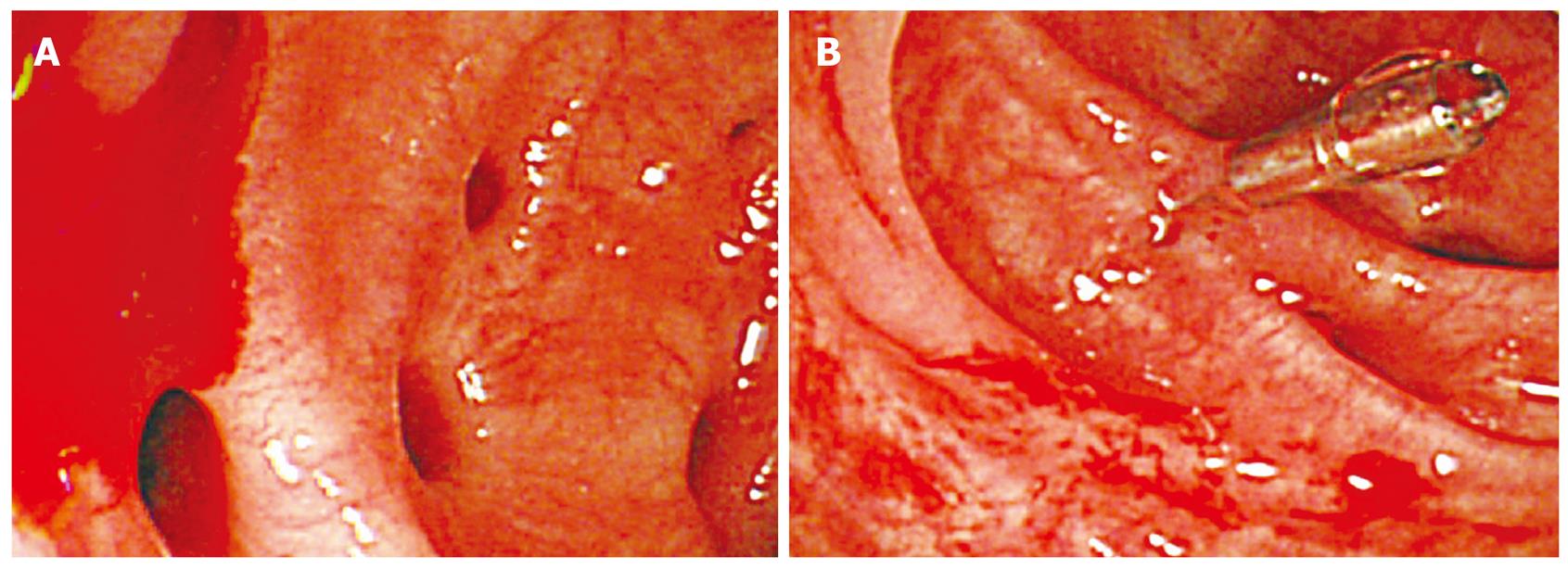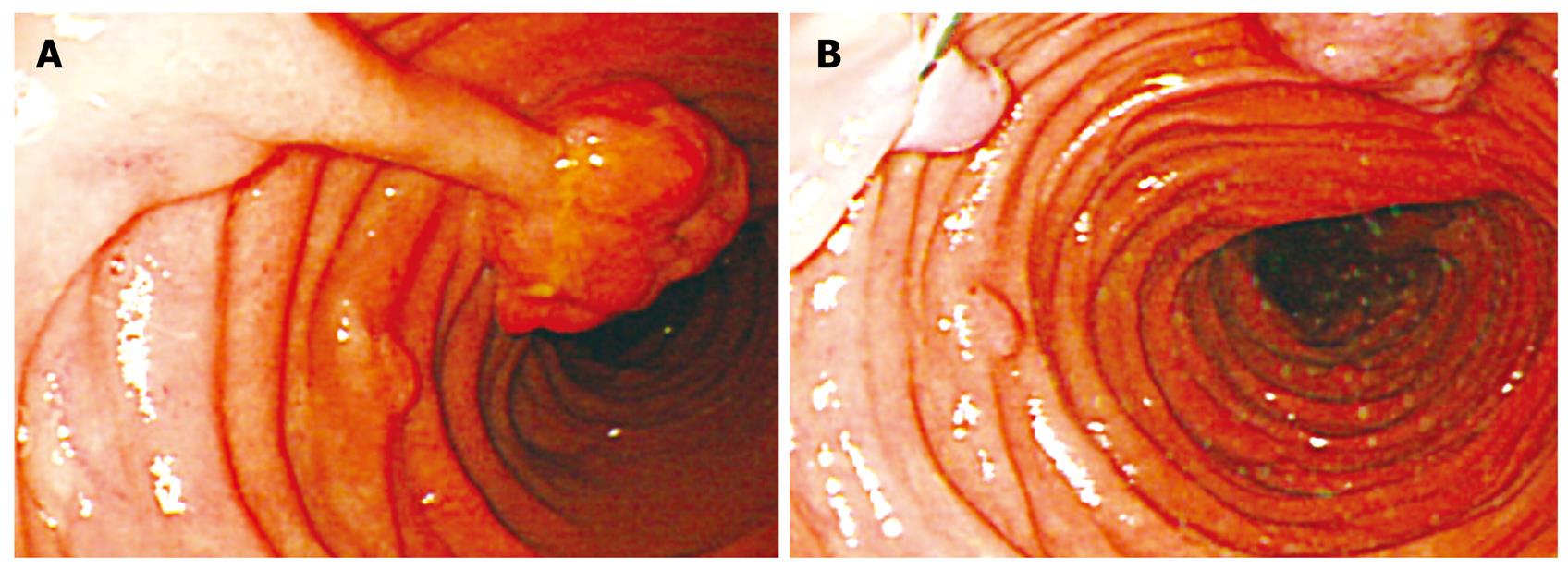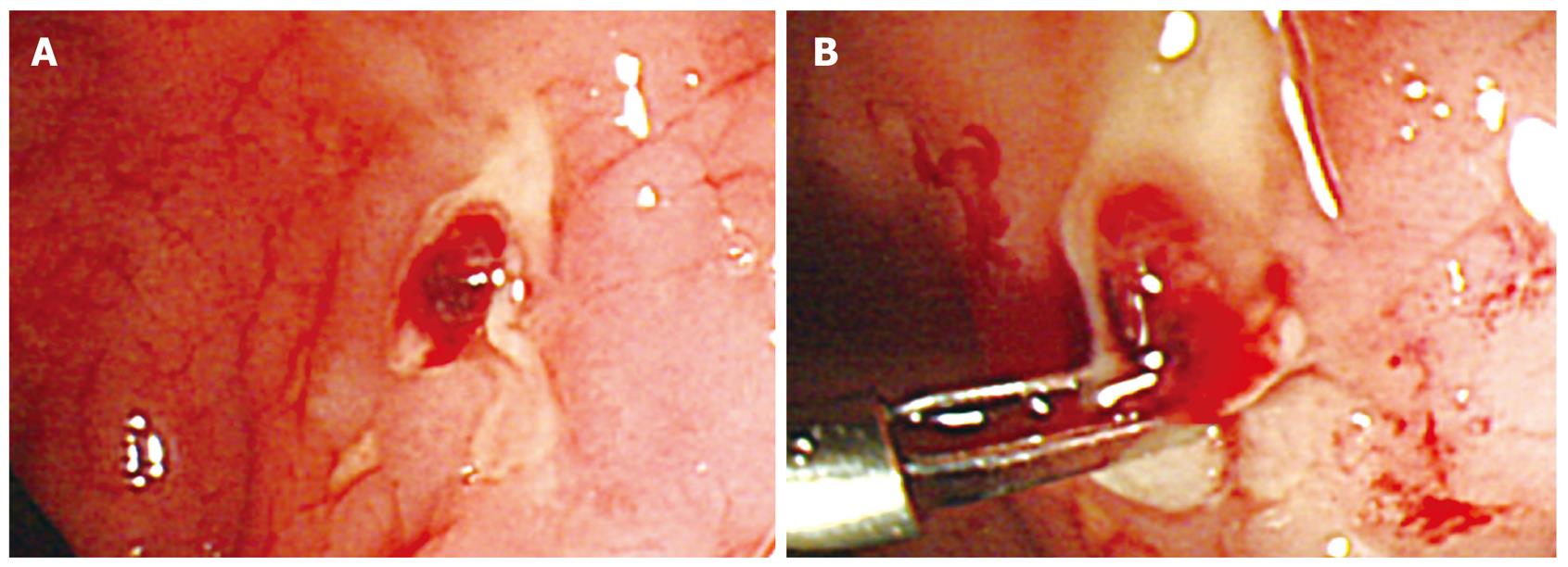Copyright
©2009 Baishideng.
World J Gastrointest Endosc. Oct 15, 2009; 1(1): 7-11
Published online Oct 15, 2009. doi: 10.4253/wjge.v1.i1.7
Published online Oct 15, 2009. doi: 10.4253/wjge.v1.i1.7
Figure 1 Endoscopic clipping for the treatment of colonic diverticular bleeding.
A: An actively bleeding colonic diverticulum of the ascending colon in a 78-year-old man with chronic obstructive pulmonary disease; B: Hemostasis was achieved with a clip.
Figure 2 Endoscopic clipping for the treatment of postpolypectomy bleeding.
A: A semipedunculated polyp was treated by an endoscopic mucosal resection technique in the sigmoid colon in a 64-year-old man with hypertension; B: Active bleeding occurred at the postpolypectomy ulcer on the next day; C: Hemostasis was achieved with clips.
Figure 3 Endoscopic clipping for the prophylactic management to prevent delayed postpolypectomy bleeding.
A: A pedunculated polyp of the ileum in a 28-year-old man with Peutz-Jeghers syndrome; B: After application of a clip at the base of the long stalk to prevent delayed bleeding, the polyp was resected by snare.
Figure 4 Endoscopic clipping for the treatment of acute hemorrhagic rectal ulcer.
A: An exposed vessel of the rectal ulcer in a bed-ridden 70-year-old man with liver cirrhosis and severe burn; B: A clip was directly applied to the vessel.
- Citation: Hokama A, Kishimoto K, Kinjo F, Fujita J. Endoscopic clipping in the lower gastrointestinal tract. World J Gastrointest Endosc 2009; 1(1): 7-11
- URL: https://www.wjgnet.com/1948-5190/full/v1/i1/7.htm
- DOI: https://dx.doi.org/10.4253/wjge.v1.i1.7












